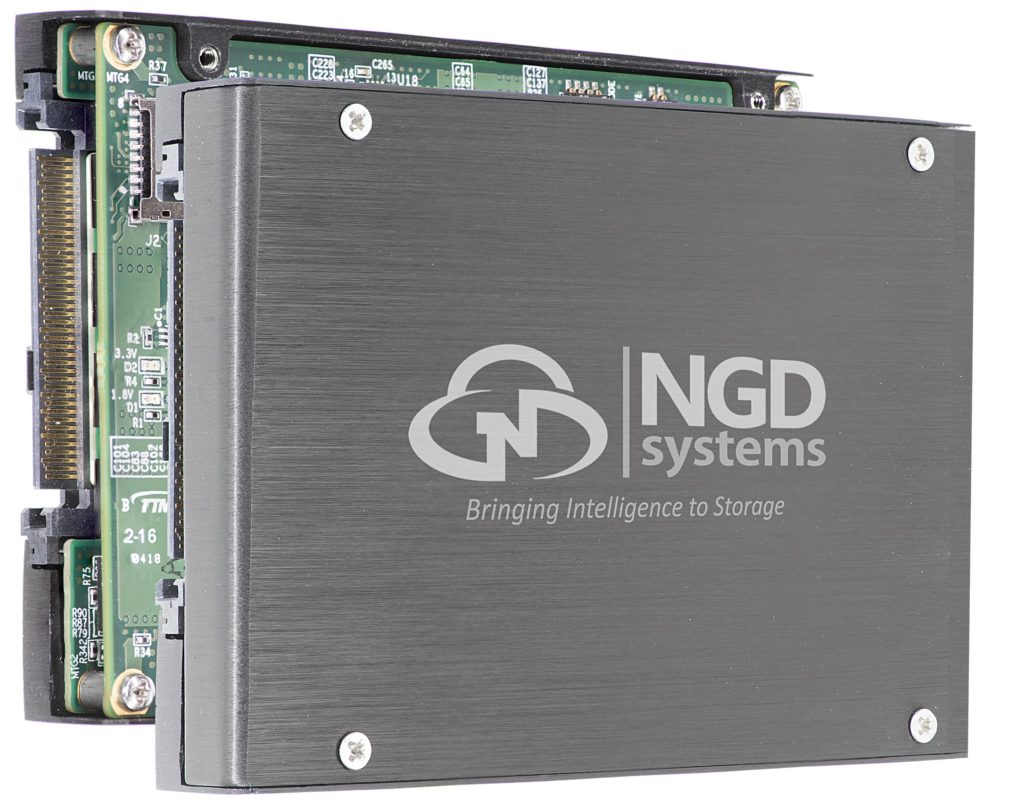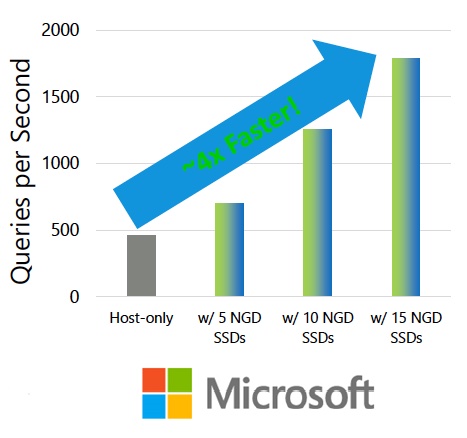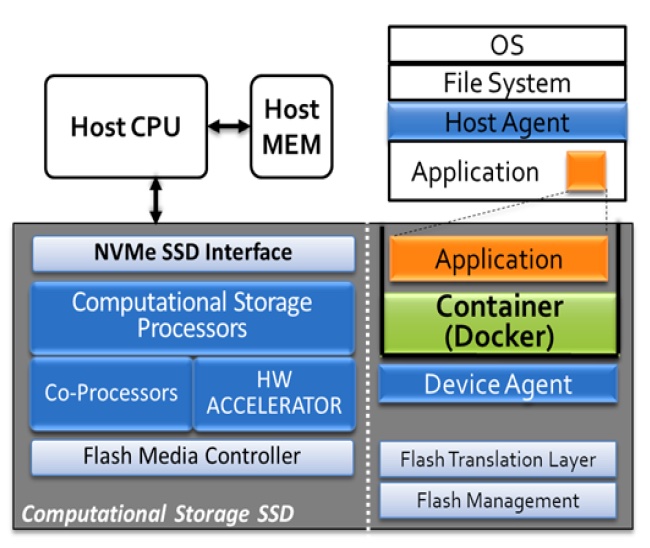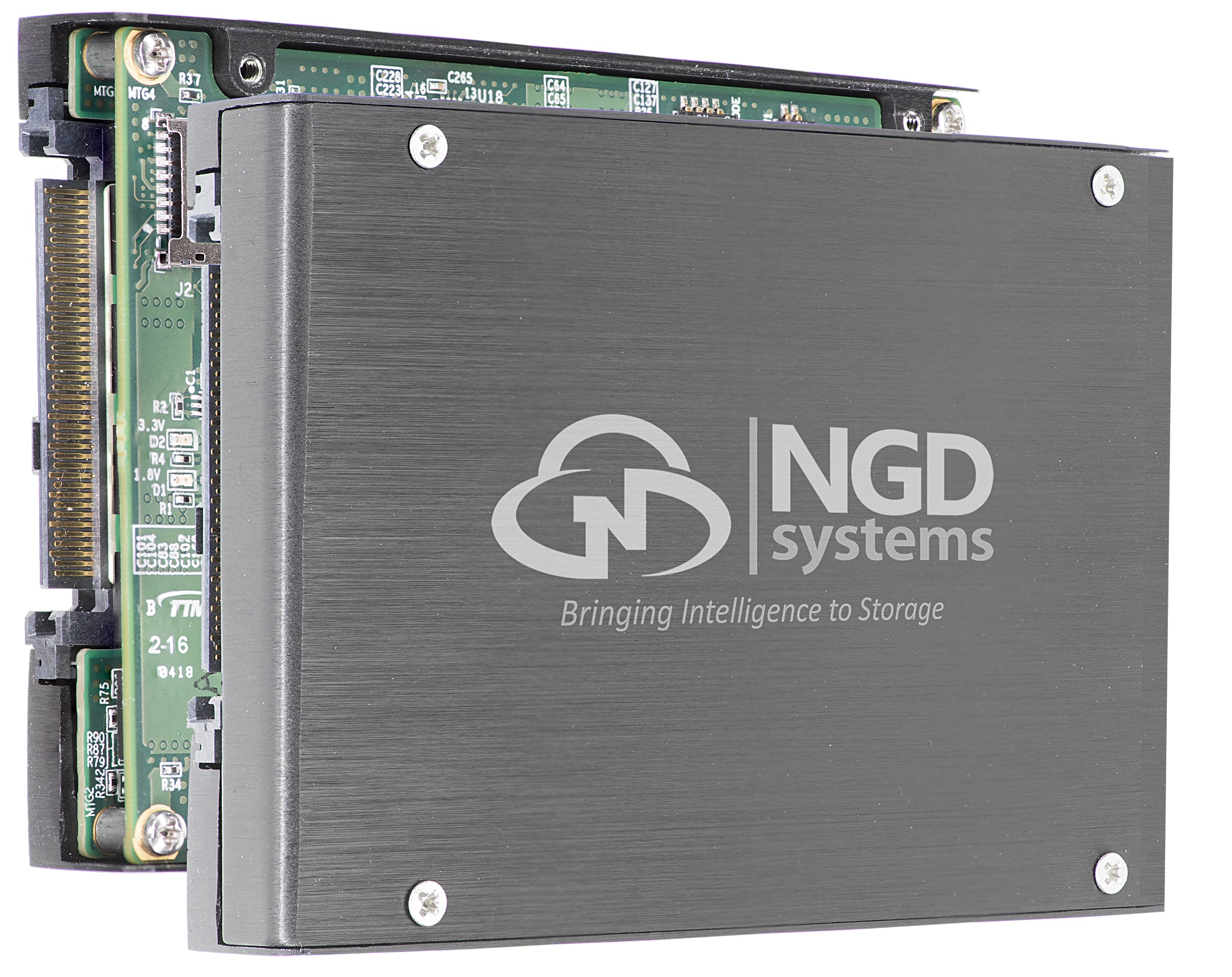NGD Systems has announced general availability of the first product in the Newport platform of high capacity NVMe SSDs.
The Irvine, Calif. startup makes big claims for the product family which provides computational storage via in-situ processing to alleviate host CPU-memory-storage bottlenecks. Performance scales as more drives are added.
Nader Salessi, CEO of NGD Systems, said the company offers the “industry’s highest capacity NVMe, smallest footprint, and the most power-efficient NVMe SSDs on the market. This makes it possible to perform in-situ processing within the storage device itself without having to trade power, space or cost to do so.”
Don Jeanette, storage research VP at TrendFocus, provided a canned quote: “By eliminating the need to move data before processing, the Newport Platform drastically reduces latency and system level power consumption.”
Let’s run through the spec for the first Newport product, a a 14nm ASIC-based 16TB U.2 NVMe SSD, which makes its debut today. NGD says this is the world’s densest and lowest-powered drive, needing 8w at peak load.
Newport has up to 16 flash channels and supports NVMe v1.3 and PCIe Gen 3.0 x4.

According to NGD, a Hadoop Terasort with 4 Newport drives per node is faster than unassisted Hadoop nodes and needs 8-core hosts, as opposed to 16-core varieties.. A Microsoft image query processing time is up to 4x faster with Newport drives compared to host-only processing.

Newport breeding programme
Newport products have a quad-core, 64-bit ARM processor running Ubuntu and supporting Docker.
There is an up to 8TB capacity M.2 “gumstick” card version, an up to 32TB EDSFF (ruler format) variant and the U.2 (2.5-inch) form factor runs up to 32TB of 3D TLC (3bits/cell) NAND. A larger-capacity AIC (add-in Card) part will store up to 64TB. These additional Newport products will be released later this year and a a 32TB U.2 drive is expected in July 2019.
NGD is targeting Newport devices at hyperscalers and intelligent internet edge application. Computation at the edge limits the data sent to a central location, according to the company, and enables faster processing with a smaller edge device CPU. This saves electricity.

Other drive-level computation work could involve video transcoding, network monitoring stream pre-processing, RAID parity calculations and compression.
Newport can be deployed just as a dense, low-power drive with in-situ processing turned off or as a computational storage drive offloading the host CPU.








